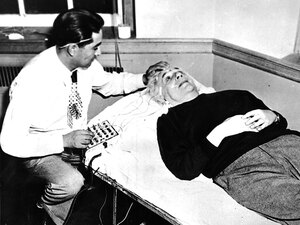 I guess first off I should define what is meant by 'unrestrained.' Here on Earth, whenever we see falling liquids they obviously do not take the form of a perfect sphere (have you ever drawn a round raindrop before?). This is not for a lack of 'trying' on the liquid's part; there are simply other forces at work here on Earth that do not allow liquids to become completely spherical. The two culprits that 'restrain' liquids on Earth are gravity and the atmosphere. Gravity keeps the liquid moving toward the Earth and the gases in the atmosphere provide an uneven drag, with both factors resulting in raindrops that are flattened out and deformed.
I guess first off I should define what is meant by 'unrestrained.' Here on Earth, whenever we see falling liquids they obviously do not take the form of a perfect sphere (have you ever drawn a round raindrop before?). This is not for a lack of 'trying' on the liquid's part; there are simply other forces at work here on Earth that do not allow liquids to become completely spherical. The two culprits that 'restrain' liquids on Earth are gravity and the atmosphere. Gravity keeps the liquid moving toward the Earth and the gases in the atmosphere provide an uneven drag, with both factors resulting in raindrops that are flattened out and deformed. Click here to watch the video!


